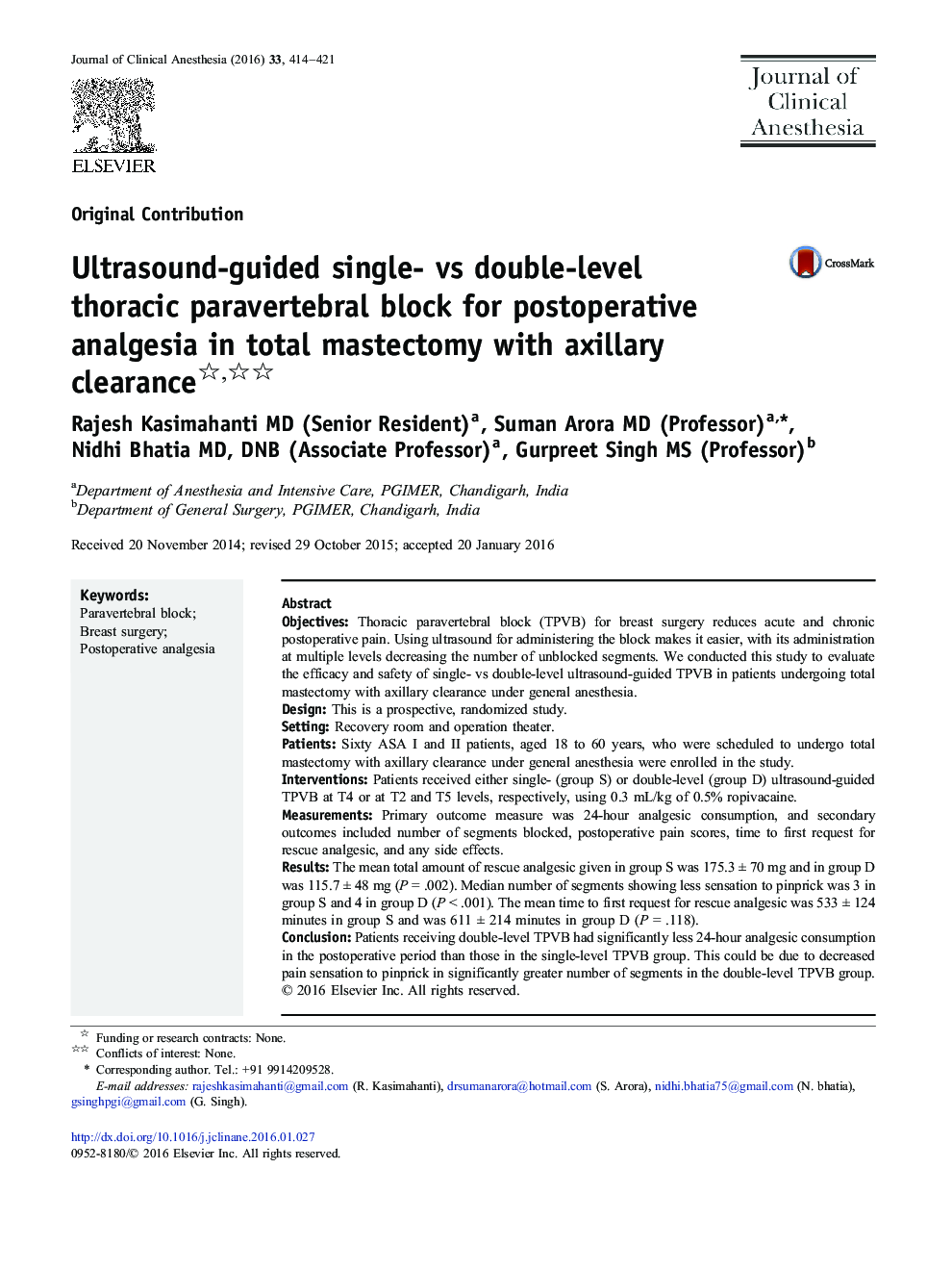| Article ID | Journal | Published Year | Pages | File Type |
|---|---|---|---|---|
| 2762130 | Journal of Clinical Anesthesia | 2016 | 8 Pages |
•We evaluated efficacy and safety of single- vs double-level ultrasound-guided TPVB in patients undergoing total mastectomy.•Patients received either single- or double-level, ultrasound-guided TPVB at T4 or at T2 and T5 levels, respectively, using 0.3 mL/kg of 0.5% ropivacaine.•Median number of segments showing less sensation to pinprick was 3 in group S and 4 in group D (P < .001).•The mean total amount of rescue analgesia given in group S was 175.3 ± 70 mg and in group D was 115.7 ± 48 mg (P = .002).•Patients receiving double-level TPVB had significantly less postoperative analgesic consumption.
ObjectivesThoracic paravertebral block (TPVB) for breast surgery reduces acute and chronic postoperative pain. Using ultrasound for administering the block makes it easier, with its administration at multiple levels decreasing the number of unblocked segments. We conducted this study to evaluate the efficacy and safety of single- vs double-level ultrasound-guided TPVB in patients undergoing total mastectomy with axillary clearance under general anesthesia.DesignThis is a prospective, randomized study.SettingRecovery room and operation theater.PatientsSixty ASA I and II patients, aged 18 to 60 years, who were scheduled to undergo total mastectomy with axillary clearance under general anesthesia were enrolled in the study.InterventionsPatients received either single- (group S) or double-level (group D) ultrasound-guided TPVB at T4 or at T2 and T5 levels, respectively, using 0.3 mL/kg of 0.5% ropivacaine.MeasurementsPrimary outcome measure was 24-hour analgesic consumption, and secondary outcomes included number of segments blocked, postoperative pain scores, time to first request for rescue analgesic, and any side effects.ResultsThe mean total amount of rescue analgesic given in group S was 175.3 ± 70 mg and in group D was 115.7 ± 48 mg (P = .002). Median number of segments showing less sensation to pinprick was 3 in group S and 4 in group D (P < .001). The mean time to first request for rescue analgesic was 533 ± 124 minutes in group S and was 611 ± 214 minutes in group D (P = .118).ConclusionPatients receiving double-level TPVB had significantly less 24-hour analgesic consumption in the postoperative period than those in the single-level TPVB group. This could be due to decreased pain sensation to pinprick in significantly greater number of segments in the double-level TPVB group.
